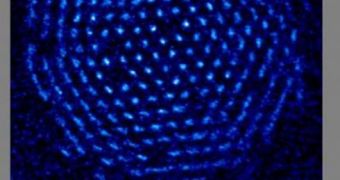There is a growing consensus at the international level that quantum computers are the future of complex calculations, but the goal of having such devices that actually work remains distant, on account of the fact that the very basic principles on which quantum technology is based are very unstable. This means that a machine built in this manner will also be prone to errors, which could ultimately either render the entire computer unstable, or yield the wrong results. Neither way is good enough, and, now, researchers at the National Institute of Standards and Technology (NIST) believe they may have developed an efficient tool to stop a large number of possible errors in such computers.
The new experiments were conducted on an array of very cold beryllium ions, comprising more than 1,000 of such electrically charged atoms. The entire structure was held together by electric and magnetic fields, and each of the atoms was, in fact, a qubit (quantum bit), the basic unit of a quantum processor. The goal of the research was to minimize any possible disturbance that might occur in such a structure, especially from the stray expression of the force fields around it. According to experts at NIST, the way to do this is by applying customized sequences of microwave pulses, which have the ability to prevent the accumulation of qubit errors in the beryllium atoms.
“Simulations show that, under appropriate conditions, this method can reduce the error rate in quantum computing systems up to a hundred times more than comparable techniques. Our measurement results validate these predictions,” NIST guest researcher Hermann Uys, the lead author of a new scientific paper detailing the find, published in the April 23rd issue of the scientific journal Nature, explains. Uys is employed at the Council for Scientific and Industrial Research, in Pretoria, South Africa.
The researchers also underline the importance of suppressing the errors as early in the process as possible. If they are allowed to accumulate at the qubit levels, then removing them using software will be a very time- and resource-consuming stage. Unlike average computers, whose transistors exist only in an “on” or “off” state, qubits can exist in both at the same time, thanks to the peculiarities that are found at an atomic level. This will allow for cracking codes that are inaccessible to regular computers at this point, in that it would take years or decades for a single string to be breached.

 14 DAY TRIAL //
14 DAY TRIAL //